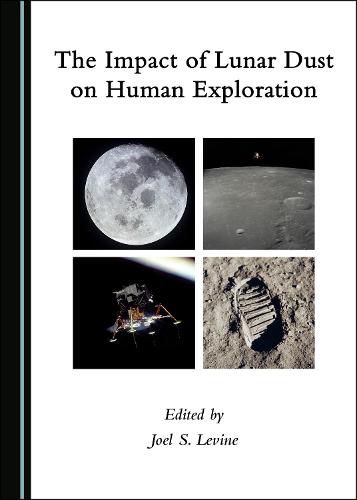Readings Newsletter
Become a Readings Member to make your shopping experience even easier.
Sign in or sign up for free!
You’re not far away from qualifying for FREE standard shipping within Australia
You’ve qualified for FREE standard shipping within Australia
The cart is loading…






When the Apollo 11 astronauts landed on the Moon on July 20, 1969, they made a very important discovery. During their landing on the surface of the Moon, the exhaust gases released from the Lunar Module landing rockets caused large amounts of surface dust to move into the thin lunar atmosphere, causing obscuration of the lunar surface. Once they landed, they found that the surface of the Moon was covered with several inches of very fine, tiny particles composed of sharp, glassy material. The lunar dust stuck to everything it came in contact with, and, once on the lunar surface, the dust eroded their spacesuits, caused overheating on equipment and instrumentation, compromised seals on their spacesuits and on lunar sample collecting boxes, irritated their eyes and lungs, and generally coated everything very efficiently. On the return to Earth in the Apollo Command Module, lunar dust inadvertently brought aboard floated freely in their cabin causing problems. Now, 50 years later, humans will return to the Moon in the Artemis Program, as early as 2024. This book summarizes what we know about lunar dust, its structure and chemical composition, its impact on human health, and how to reduce/mitigate its effects on future human exploration. The four dozen contributors to the 14 chapters in the book are planetary scientists, engineers, mission planners, medical researchers and physicians from NASA and the European Space Agency (ESA), as well as universities and industry from the United States, Australia, Germany, Italy, the Netherlands, Portugal and Sweden.
$9.00 standard shipping within Australia
FREE standard shipping within Australia for orders over $100.00
Express & International shipping calculated at checkout
When the Apollo 11 astronauts landed on the Moon on July 20, 1969, they made a very important discovery. During their landing on the surface of the Moon, the exhaust gases released from the Lunar Module landing rockets caused large amounts of surface dust to move into the thin lunar atmosphere, causing obscuration of the lunar surface. Once they landed, they found that the surface of the Moon was covered with several inches of very fine, tiny particles composed of sharp, glassy material. The lunar dust stuck to everything it came in contact with, and, once on the lunar surface, the dust eroded their spacesuits, caused overheating on equipment and instrumentation, compromised seals on their spacesuits and on lunar sample collecting boxes, irritated their eyes and lungs, and generally coated everything very efficiently. On the return to Earth in the Apollo Command Module, lunar dust inadvertently brought aboard floated freely in their cabin causing problems. Now, 50 years later, humans will return to the Moon in the Artemis Program, as early as 2024. This book summarizes what we know about lunar dust, its structure and chemical composition, its impact on human health, and how to reduce/mitigate its effects on future human exploration. The four dozen contributors to the 14 chapters in the book are planetary scientists, engineers, mission planners, medical researchers and physicians from NASA and the European Space Agency (ESA), as well as universities and industry from the United States, Australia, Germany, Italy, the Netherlands, Portugal and Sweden.